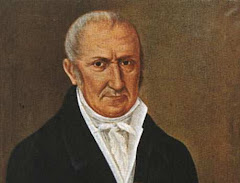



Nicola Tregay
Mill Chase School, Bordon, Hampshire, UK
http://www.sci-journal.org/index.php?template_type=report&id=26&htm=reports/vol3no1/../vol3no2/v3n2a3.html&link=reports/home.php
Hypothesis:
Does the Diameter of the wire affect the Resistance?
Ohms law states that if the cross section of the wire is uniform then the resistance is proportional to the length and inversely proportional to the area of the cross section. The diameter of the wire will have an affect on the resistance of a wire. This is because the electrons have to squeeze together more to pass through a thin wire than they do to pass through a thick wire.
I can predict that the thinner the wire the higher the resistance. If I had a piece of wire 1 mm in diameter and a piece of wire 2 mm in diameter, how much would the resistance increase by? Would the resistance double because the diameter has doubled? Would it increase four times because the cross section has increased by four? Or does it do something else?
π r2 is how to calculate the area of the cross section.
0.52 = 0.25, 0.25* π = 0.79cm2 (Area of cross section of a 1mm wire)
12 = 1, 1* π = 3.14cm2 (Area of cross section of a 2mm wire)
I will need 5 x wires, an ammeter, a voltmeter, 30cm of 32swg nichrome wire, 30cm of 26swg nichrome wire, 30cm of 22swg nichrome wire, 2 crocodile clips, and a power pack.
The diameters of the wires are:
32swg = 0.28mm
26swg = 0.45mm
22swg = 0.71mm
The area of the cross section of each of these are:
0.142 = 0.0196* π = 0.06cm2 (32swg)
0.2252 = 0.05* π = 0.16cm2 (26swg)
0.3552 = 0.126* π = 0.39cm2 (22swg)
To make this test fair I will keep the length of the wire the same and I will also keep the voltage the same. I will do the same as I did before except this time I will be using different wires.
The Plan
1. Collect apparatus: A voltmeter, an ammeter, 5 x wires, 2 crocodile clips, 30cm 32swg nichrome wire, 30 cm 26swg nichrome wire, 30 cm 22swg nichrome wire and a power pack.
2. Set the apparatus up as shown.
3. the power pack on as a low a setting as possible. (So that the volts aren't too high for the voltmeter to read.)
4. Place the 32swg nichrome wire between the two crocodile clips to complete the circuit.
5. Replace the 32swg nichrome wire with the 26swg nichrome wire. Remember to keep the voltage the same, or as near as you can get it.
6. Record what both the ammeter and voltmeter say.
7. Change the wire to the 22swg nichrome wire and repeat the experiment.
8. Work out the resistance for all your results by using Ohms law.
V=I*R or R=V/I
9. Record the results in a graph.
Results
Nichrome Wire
Diameter/mm Voltage/volts Current/amps Resistance/ohms
0.28 0.6 0.14 4.29
0.45 0.6 0.45 1.33
0.71 0.6 0.74 0.81
Conclusion
My hypothesis was correct. The thinner the wire, the higher the resistance and the thicker the wire, the lower the resistance. This is because there are electrons in a circuit. These electrons travel around the circuit at an even pace. When they come to the wire I placed in the circuit the electrons have to slow down in order to be able to pass through it. This causes a resistance. The electrons will bump together and the more they bump the higher the resistance of the wire. In a thin wire these electrons have to squeeze tightly together in order to pass through, however in a thick wire these electrons do not have to squeeze together as much to be able to pass through. So the more they squeeze together, the higher the resistance.
After collecting my results I drew three graphs. The graph which compares the diameter of the wire to the resistance of the wire travels in a curve. The graph shows that the resistance in Ohms is inversely proportional to the diameter of the wire. (This means that if you double the diameter you halve the resistance). The graph which compares the area of the cross section and the resistance of the wire also travels in a curve.
This proves Ohm's Law as he states that if the area of the cross section of the wire is uniform then the resistance of the wire is inversely proportional to the cross section. The third graph which compares the diameter of the wire to the current flowing through the wire travels a straight line through the origin. This means that the diameter of the wire is directly proportional to the current flowing round the circuit. If you double the diameter, the current also doubles because there is less resistance as the diameter increases.
The gradient of this graph is (Height divided by width) 1.5/0.12 = 12.5.
My working method was a good one although there were a few wayward results. This could have been avoided if I had had the time to repeat the experiment and work out an average. They could have been slightly out because I did not measure the length of wire correctly or because I did not read the ammeter and voltmeter accurately. For this investigation I used 32swg, 26swg and 22swg nichrome wire because they were the only ones that I had. (It might have been better if I'd used more thicknesses, because then the graphs would have been smoother).
Ohms law says that to find the resistivity of the wire / specific resistance of the cross sectional area you do:
ρ = RC/L
(ρ = resistivity of the wire, R = resistance of the wire, C = cross sectional area, L = length of the wire)
Summary of Ohm’s law
The current flowing through the circuit is directly proportional to the voltage applied to the circuit. (If you double one, you double the other.)
The cross sectional area is inversely proportional to the resistance of the wire. (If you double the cross sectional area, you halve the resistance.)
Ohm’s law states that:
V = I*R and
ρ = RC/L
V = voltage applied, I = current
R = resistance of the circuit, C = cross sectional area
L = length of the wire, and ρ = resistivity of the wire.





















No comments:
Post a Comment